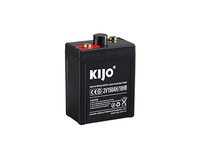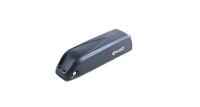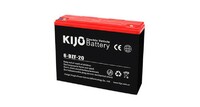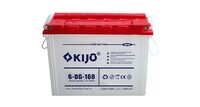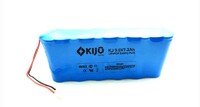BACKUP BATTERY SUPPLY SYSTEM
Specifications
The lithium backup power supply is also called an emergency power supply. It is a device that replaces the main power supply to supply power to the load when the main power supply fails to work
normally in an emergency. According to the different power sources, it can be divided into battery type backup power and generator type backup power.
The battery type backup power supply unit components of chargers, inverters, batteries, dual power switch, etc., and the generator type backup power supply unit components of generator sets,
isolation transformers, and dual power switch. Nowadays, the lithium ion backup power is getting more popular.
Types of backup power supply
The rechargeable backup power supply is commonly used in industries, commerce, and fire protection. Nowadays, most people choose to use EPS backup power supply and UPS backup power supply:
EPS backup power supply
EPS backup power supply is composed of an inverter, rectifier, charger, battery, isolation transformer, controller, switch, and so on. EPS emergency power supply is suitable for inductive loads
(such as gas discharge lamps, fluorescent lamps, motors) and resistive loads (such as incandescent lamps). Therefore, EPS is commonly used in fire fighting and other fields, and it is also a better
battery rechargeable battery backup for home.
EPS rechargeable battery power supply working principle:
In non-emergency situations, the main power supply is in working condition, and the backup power supply charges the power supply battery through the charging device.
In an emergency, the dual power supply switch switches the load from the main power supply to the backup power supply in a very short time (with millisecond level).
At this time, the main power supply is off, and the backup power supply provides power to the load.
When the main power supply returns to normal, the dual power supply switch will instantly switch back to the main power supply.
UPS backup power supply
UPS backup power supply consists of a transformer, charger, storage battery, etc. UPS is only suitable for capacitive loads, so it is commonly used in computers and other fields and is often used
as a rechargeable backup power supply for an office.
Working principle:
AC and DC backup power supply
The DC backup power supply has two electrodes, a positive electrode and a negative electrode. The positive electrode has a high electric potential and the negative electrode has a low electric
potential. When the two electrodes are connected to the circuit, a constant potential difference between the two ends of the circuit can be maintained, thus, a current from positive to negative is
formed in the external circuit.
The DC rechargeable backup power supply is mainly used in hydraulic and thermal power plants, various substations. The DC rechargeable backup power supply is mainly composed of battery packs,
charging devices, DC feeder screens, DC distribution cabinets, DC power monitoring devices, DC branch feeders, etc. It forms a huge, distributed DC power supply network, providing safe and reliable
backup power for various subsystems such as relay protection devices, circuit breakers, signal systems, UPS, communications, etc., so as to avoid their huge impact due to the power failure.
The AC rechargeable backup power supply adopts two AC power supplies. The AC input of the AC rechargeable backup power supply should are not in accordance with the regulations. The continuous
fluctuation range of AC input voltage does not exceed 10%, and the harmonic content does not exceed relevant regulations. The AC rechargeable power supply should not be supplied by the same
transformer and bus with other impulsive loads. The input and output loops of the AC rechargeablebackup power supply should adopt cables.
Industrial battery backup is available at Kijo, feel free to contact!
KIJO battery Group is a professional storage battery company, we provide motive power battery, ups power supply battery, best residential battery storage, home batteries for solar power, home
batteries for solar storage, house energy storage and etc. Want to know more? Please contact us.
- Country: China (Mainland)
- Address: 1388 Fushan No.1 Street,Xiaolan Economic Development Zone, Nanchang, Jiangxi, China
- Contact: Jason Chuang

